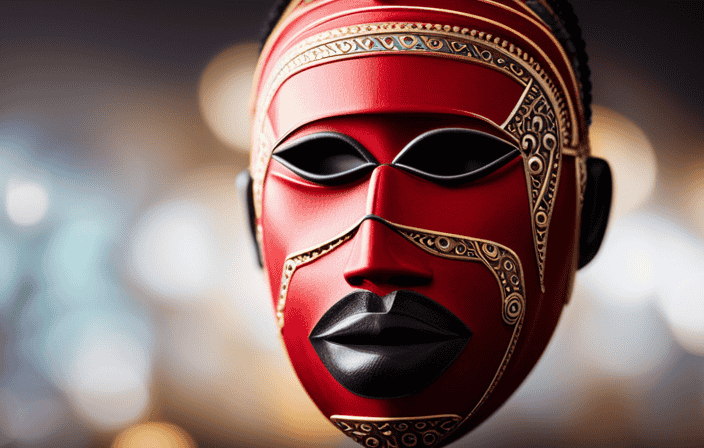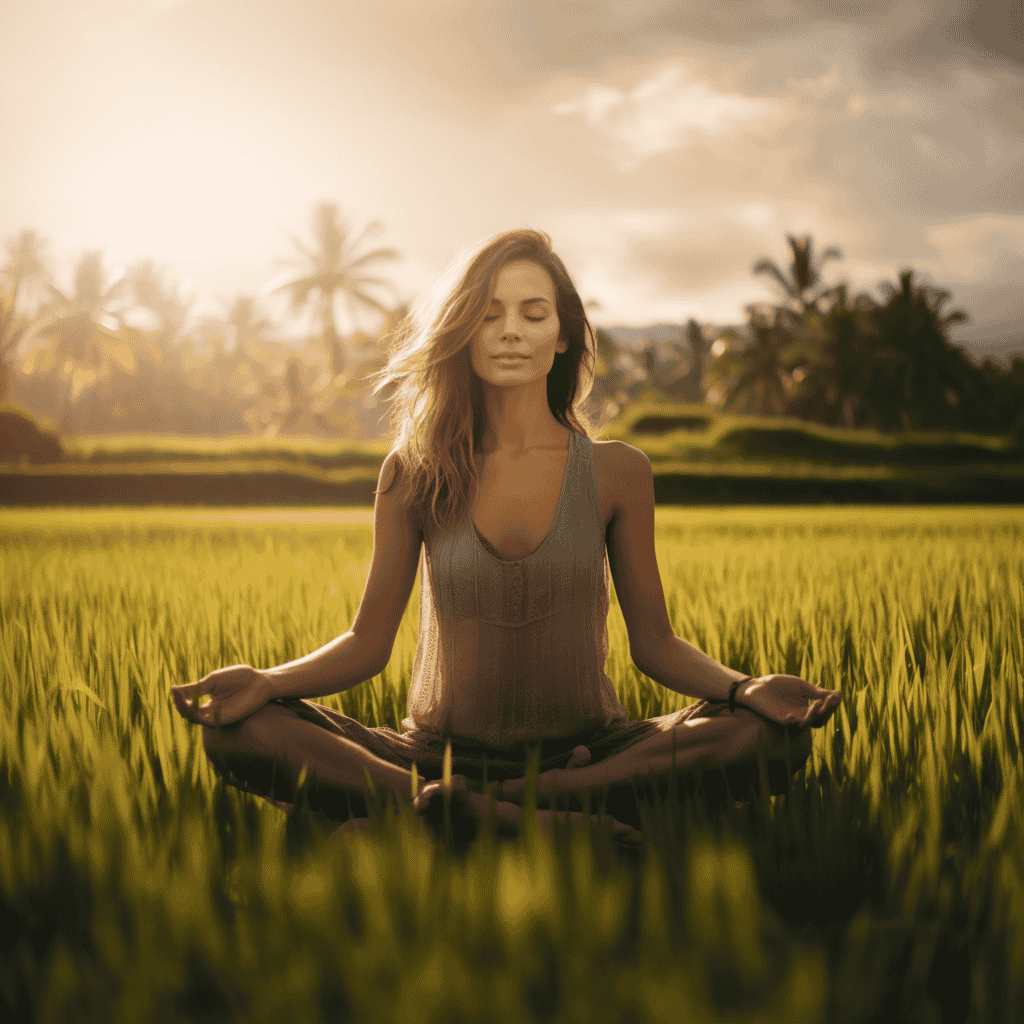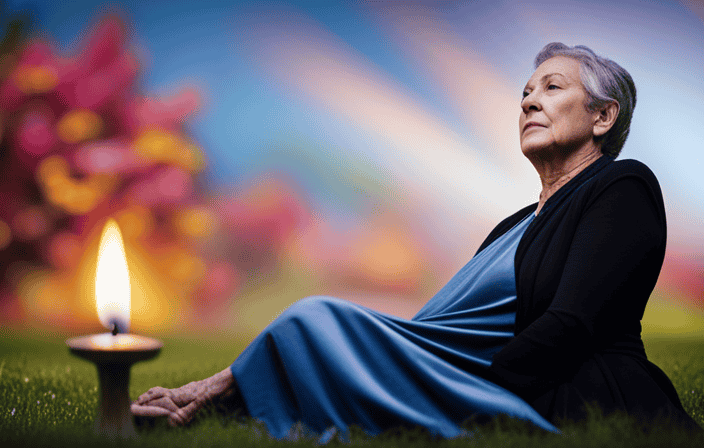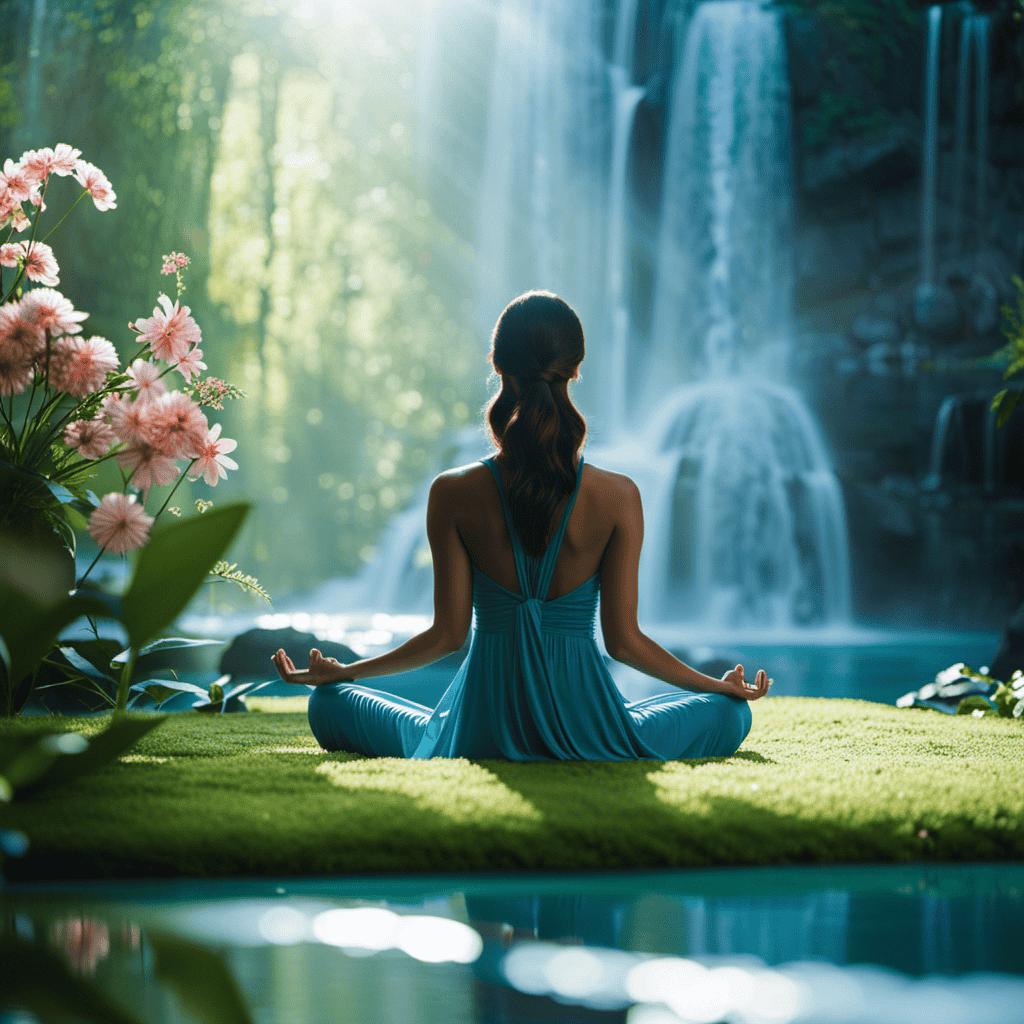African art skillfully blends the physical and spiritual realms, serving as a connection that allows individuals to connect with their ancestral heritage and access the spiritual realm.
Through tribal masks, figurines, and pottery, African art bridges the gap between the physical and metaphysical, offering a glimpse into ancient customs and beliefs.
In this article, we will explore the profound significance of African art in connecting real and spiritual realms, its role in rituals and ceremonies, and its evolution in contemporary times.
Key Takeaways
- African art serves as a channel for ancestral customs and beliefs, connecting individuals with their ancestry and bridging the gap between the spiritual realm and the physical world.
- African art plays a significant role in rituals and ceremonies, allowing practitioners to receive guidance from the spirit world, connect with their ancestors, and hold symbolic value in religious rites.
- Contemporary African art draws inspiration from ancestral beliefs and creates spaces for meditation and healing, using various mediums such as sculptures, paintings, installations, mixed media, digital art, and street art.
- African art depicts spirits, deities, and ancestors, honoring and communicating with the spiritual world through objects like amulets, talismans, masks, staffs, and ritual objects. It uses color, patterns, symbols, and visual elements to convey specific messages and spiritual significance. Additionally, music and dance are integrated into African art to enhance spiritual experiences.
African Art as Ancestral Connection
African art connects me with my ancestors, bridging the gap between the physical world and the spiritual realm through the expression of their customs and beliefs. Each piece of art holds a powerful significance, serving as a channel for ancestral wisdom and spirituality.
Tribal masks, figurines, and pottery are not just mere objects; they embody the essence of my heritage. Through these art forms, I can convey my thoughts, feelings, and requests to the spirit world. They serve as a visual representation of my ancestral lineage, reminding me of the importance of connecting with my roots.
African art is a tangible link to the past, preserving the knowledge and traditions passed down through generations. It is through this art that I feel a deep connection to my ancestors and find solace in their presence.
Role in Rituals and Ceremonies
In rituals and ceremonies, the vibrant expressions of African art serve as portals, bridging the earthly realm with the ethereal, allowing me to step into a sacred dance with the unseen forces that guide and protect.
African art plays a significant role in divination ceremonies, where practitioners seek guidance from the spirit world. Through art, thoughts and feelings are conveyed, creating a connection with ancestors. The symbolic value of African art in religious rites cannot be undermined, as it holds deep cultural and spiritual significance.
Initiation ceremonies also utilize African art for religious practices, enhancing the overall spiritual experience. The depiction of spirits and ancestors in African art further strengthens the connection between the real and spiritual worlds. Through sculptures, masks, and ritual objects, African art not only honors and communicates with the spirits but also preserves and shares religious knowledge.
Music and dance, integrated within the art, create a spiritual atmosphere, enhancing the overall experience.
Contemporary Inspirations
As an observer, I appreciate how contemporary African artists draw inspiration from ancestral beliefs to create spaces for meditation and healing. They utilize various art forms such as sculptures, paintings, and installations to enable spiritual awareness and foster a connection with the spiritual realm. These artworks serve as pathways for individuals to explore their inner selves and find solace in their cultural heritage. Through mixed media, digital art, and street art, artists offer unique dimensions that resonate with both the African and global community. The fusion of traditional aesthetics with modern practices in contemporary African art reflects the evolution of spirituality and addresses global issues affecting Africans and the world. It is fascinating to witness how these artists use their creativity to nurture cohesion, preserve cultural traditions, and evoke a sense of spiritual awakening in viewers.
| Emotions | Symbolism | Spiritual Connection |
|---|---|---|
| Tranquility | Tree of Life | Inner Peace |
| Hope | Water | Cleansing |
| Joy | Sun | Enlightenment |
| Serenity | Lotus Flower | Spiritual Awakening |
Evolution of African Art
I find it fascinating how the evolution of African art intertwines traditional aesthetics with modern practices, creating new hybrid forms that address global issues and connect with the global community.
African art has undergone a significant transformation, adapting to the changing times while still preserving its rich cultural heritage.
Today, artists use a variety of mediums such as mixed media, digital art, and street art to express their ideas and engage with a wider audience. These contemporary forms of African art not only serve as a means of self-expression but also provide spaces for meditation and healing. They enable spiritual awareness and offer unique dimensions for exploring and understanding the spiritual realm.
Through their innovative approaches, African artists continue to nurture cultural cohesion while addressing the pressing issues affecting Africans and the world at large.
Depiction of Spirits and Ancestors
Engaging with African art allows one to explore the captivating presence of spirits and ancestors. The depiction of spirits and ancestors in African art is a powerful and integral aspect of connecting the real world with the spiritual realm.
Here are four ways in which African art portrays these spiritual beings:
-
Sculptures and masks: African artists skillfully create sculptures and masks that represent spirits and ancestors. These artworks serve as physical embodiments of the spiritual realm, allowing individuals to visually connect with these entities.
-
Symbols and patterns: African art often incorporates specific symbols and patterns that hold spiritual meanings. These visual elements communicate messages and convey the spiritual significance of the artwork, providing a deeper understanding of the spiritual world.
-
Ritual objects: African art includes various ritual objects used in religious and cultural ceremonies. Masks, staffs, and other objects honor and connect with the spiritual realm, serving as tools for spiritual practice and worship.
-
Music and dance: African art integrates music and dance as means to connect with the spirit world. The rhythmic movements and enchanting melodies create a spiritual atmosphere, enhancing the overall spiritual experience.
Through these artistic expressions, African art not only preserves and shares religious knowledge but also allows individuals to engage with the spiritual world in a tangible and meaningful way.
Use of Color, Patterns, and Symbols
Exploring African art allows me to appreciate the vibrant use of color, patterns, and symbols in conveying spiritual meanings.
The use of color in African art holds cultural and spiritual significance. Each color carries its own symbolism, such as red representing vitality and life force, and blue representing spirituality and protection.
Patterns in African art also play a significant role in connecting the real and spiritual worlds. Geometric patterns, for example, symbolize the interconnectedness of all things.
Symbols in African art are another powerful tool for spiritual communication. They can represent specific deities, ancestral spirits, or important cultural beliefs. These symbols serve as a visual language, conveying messages and spiritual significance to those who understand them.
Together, the vibrant colors, intricate patterns, and meaningful symbols in African art create a visual representation of the spiritual realm, allowing viewers to engage and connect with the spiritual world.
Conveying Spiritual Ideas
Moving on from the use of color, patterns, and symbols, let’s delve into how African art conveys spiritual ideas.
The spiritual realm is intricately intertwined with the real world in African art. This connection is brought to life through various visual elements and artistic techniques. Sculptures, masks, paintings, and murals serve as visual representations of religious narratives and beliefs. They engage viewers in these narratives and teachings, preserving and sharing religious knowledge.
Furthermore, music and dance are integrated into artistic performances, creating a spiritual atmosphere and enhancing the overall experience. By combining multiple art forms, African art becomes a powerful medium for expressing and connecting with the spiritual world.
It invites us to explore and engage with the rich spiritual traditions and beliefs of African cultures.
Ritual Objects and Worship
Ritual objects and worship hold a central role in African art. These objects are not merely decorative, but have deep spiritual significance and are used in religious ceremonies and practices. African art serves as a form of spiritual practice and worship, allowing individuals to connect with the spiritual realm.
Masks, staffs, and other ritual objects are used in religious and cultural ceremonies to honor and communicate with spirits and ancestors. They serve as a visual representation of religious stories and teachings, preserving and sharing religious knowledge.
Music and dance also play a vital role in African art, serving as a means to connect with the spirit world and enhance spiritual experiences. Through the integration of multiple art forms, African art creates a spiritual atmosphere that engages viewers and enhances the religious experience.
Preserving Religious Knowledge
Preserving religious knowledge through African art involves showcasing the rich cultural heritage and teachings, allowing viewers to engage with important narratives and stories.
African art serves as a visual representation of religious stories, conveying deep spiritual beliefs and practices. Paintings and murals depict significant religious narratives, providing a tangible connection to the spiritual realm.
Through these artistic expressions, African art preserves and shares religious knowledge, ensuring that important teachings are passed down to future generations.
The use of color, patterns, and symbols in African art holds cultural and spiritual significance, enhancing the religious experience for both practitioners and viewers.
By integrating multiple art forms such as music and dance, African art creates a spiritual atmosphere, inviting individuals to connect with the spirit world and engage in spiritual practices.
Through its preservation of religious knowledge, African art continues to nurture and strengthen spiritual connections for communities and individuals alike.
Music and Dance for Spiritual Connection
Engaging with music and dance in African art allows me to establish a profound spiritual connection. The rhythmic beats and graceful movements transport me into a realm where the physical and spiritual worlds intertwine.
As I immerse myself in the vibrant sounds and energetic dances, I can feel the presence of the spirits and ancestors surrounding me. The music resonates within my soul, awakening a deep sense of spirituality and connecting me to the divine.
The intricate movements of the dancers tell stories of ancient rituals and traditions, passing down religious knowledge through the generations. Through this artistic expression, I am able to participate in the spiritual practices of my ancestors and gain a deeper understanding of their beliefs and customs.
Music and dance become powerful tools for spiritual exploration and communion, creating a sacred atmosphere that transcends the boundaries of the physical world.
Integration of Multiple Art Forms
As I explore the rich tapestry of African artistic expression, I am fascinated by the diverse ways in which multiple art forms seamlessly integrate to create a deeply spiritual experience.
In African art, music and dance intertwine with visual art to form a harmonious union that transcends the physical realm and connects individuals with the spiritual world. This integration of multiple art forms enhances the spiritual atmosphere, allowing practitioners to enter a heightened state of consciousness.
The rhythmic beats of drums, the melodic tones of traditional instruments, the intricate movements of dancers, and the vibrant colors and symbols in paintings and sculptures all work together to create a complete sensory experience. This holistic approach to artistic expression is a testament to the interconnectedness of African culture, spirituality, and creativity.
Through the integration of multiple art forms, African art offers a profound and transformative spiritual connection.
Frequently Asked Questions
What are some examples of contemporary African art that incorporate ancestral beliefs?
Contemporary African artists incorporate ancestral beliefs in their work through various mediums. For example, they may create sculptures or paintings that depict spirits and ancestors, or use traditional symbols and patterns with spiritual significance in their artwork.
How has African art evolved throughout history to reflect global issues?
Throughout history, African art has evolved to reflect global issues by combining traditional aesthetics with modern practices. Through new hybrid forms, it addresses societal challenges and intertwines with the global community, creating a powerful platform for cultural expression and social commentary.
What are some specific colors, patterns, and symbols used in African art and their spiritual meanings?
Colors, patterns, and symbols in African art hold deep spiritual meanings. For example, red represents vitality and life force, while black signifies spiritual power. Geometric patterns symbolize unity and interconnectedness, and animal motifs represent specific qualities or deities. African art uses these visual elements to convey spiritual ideas.
How does African art preserve and share religious knowledge?
African art preserves and shares religious knowledge by visually representing important religious narratives and teachings. Through paintings, murals, and performances, viewers are engaged in the spiritual stories and teachings, enhancing their understanding and connection to the spiritual realm.
How do music and dance in African art enhance the spiritual experience?
Music and dance in African art enhance the spiritual experience by creating a vibrant and immersive atmosphere. Through rhythmic beats, captivating movements, and communal participation, they allow individuals to connect with the spirit world and enter a state of heightened spiritual awareness.
Conclusion
In conclusion, the significance of African art in connecting the real and spiritual worlds is profound.
Through its rich history and cultural practices, African art serves as a bridge that allows individuals to connect with their ancestry and seek guidance from the spirit world.
The evolution of African art has embraced both traditional aesthetics and modern practices, addressing global issues and intertwining with the global community.
Its depiction of spirits, ancestors, and deities honor and communicate with the spiritual realm, while music and dance enhance the spiritual experience.
African art is a powerful tool for preserving religious knowledge and engaging viewers in a spiritual journey.










